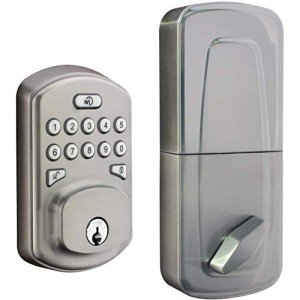Contemporary Lighting in the UK: Transforming Spaces with Illumination
Lighting plays an important function in defining the atmosphere and performance of any area. In the UK, contemporary lighting has become a considerable design aspect, providing ingenious options that blend aesthetic appeals with usefulness. This article explores the numerous designs, materials, and technologies shaping contemporary lighting, along with tips for picking the most appropriate fixtures for numerous settings.
The Evolution of Contemporary Lighting
Contemporary lighting in the UK shows the altering tastes and technological advancements in design. It encapsulates a large variety of designs, consisting of:
- Minimalist: Characterized by simplicity and clean lines, minimalist lighting fixtures focus on type and function without unnecessary decorations.
- Industrial: Inspired by metropolitan settings, industrial lighting combines basic materials like metals and woods with strong styles, producing edgy, practical pieces.
- Scandinavian: Known for its warmth and simpleness, Scandinavian lighting typically includes soft colors and natural materials, concentrating on producing a relaxing atmosphere.
- Smart Lighting: This modern pattern integrates innovation with style, enabling users to control their lighting with mobile apps, voice commands, or automation systems.
To highlight the evolution and range in the field of contemporary lighting, consider the table listed below, which highlights essential qualities of different designs.
| Design | Secret Characteristics | Popular Materials | Ideal Spaces |
|---|---|---|---|
| Minimalist | Easy, practical designs | Metal, glass, wood | Modern homes, workplaces |
| Industrial | Raw, unfinished look | Steel, concrete, wood | Lofts, galleries |
| Scandinavian | Comfortable, warm visual appeals | Natural fibers, light wood | Living rooms, coffee shops |
| Smart | Integrated innovation, automation | Differs extensively | Homes, workplaces, retail spaces |
Picking Contemporary Lighting Fixtures
Choosing the best lighting fixtures for an area requires mindful consideration of a number of elements. Here are crucial elements to remember:
1. Function of the Space
Before selecting fixtures, think about the desired usage of the location. Different functions require different types of lighting:
- Task Lighting: Focused illumination for activities such as reading, cooking, or studying. Examples include table lamps and under-cabinet lights.
- Ambient Lighting: General lighting that offers general illumination. Ceiling lights and pendant fixtures fall under this category.
- Accent Lighting: Designed to highlight particular functions or locations, such as artwork or architectural details. look at this web-site and track lighting are common options.
2. Design and Theme
The lighting should complement the existing decoration. Select fixtures that match or enhance the overall style of the space, whether it's contemporary, rustic, or diverse.
3. Size and Scale
Consider the percentage of the lighting fixtures relative to the space. A large chandelier may look stunning above a roomy table, while smaller sized pendant lights work well in compact settings.
4. Energy Efficiency
With rising energy expenses and environmental concerns, selecting energy-efficient lighting options is vital. LED lights are an exceptional choice, using longevity and lower energy usage.
5. Flexibility
In modern style, adaptability is essential. Fixtures that can be adjusted or rearranged boost functionality, permitting users to develop various environments as required.
Popular Contemporary Lighting Brands in the UK
The contemporary lighting market in the UK boasts many brands known for their ingenious styles and quality workmanship. Some significant points out consist of:
- FLOS: An Italian brand name celebrated for its creative and iconic light fixtures that often function as art pieces.
- Tom Dixon: A British designer recognized for his modern, industrial styles that perfectly integrate metal and light.
- Anglepoise: Known for its flexible, practical lamps, best for a range of settings from home workplaces to innovative studios.
- John Lewis: Offers a variety of contemporary lighting services that accommodate a broader audience, including affordable yet elegant alternatives.
FAQs about Contemporary Lighting in the UK
1. What is contemporary lighting?
Contemporary lighting describes lighting designs and fixtures that reflect current style patterns, typically characterized by tidy lines, ingenious shapes, and using modern products and technologies.
2. How do I choose the right lighting for my home?
Consider the purpose of the room, existing décor, size of fixtures, energy performance, and flexibility. Assess how each piece will add to the total ambiance and performance of your area.
3. What are some energy-efficient lighting alternatives offered in the UK?
LED lights are the most popular energy-efficient alternative, known for their long life expectancy and low energy consumption. Compact fluorescent lights (CFLs) and halogen bulbs are other options.
4. Where can I look for contemporary lighting in the UK?
Contemporary lighting can be discovered in different retail outlets, both online and in physical shops. Noteworthy merchants include John Lewis, Habitat, and specialized lighting stores.
5. Can contemporary lighting operate in traditional spaces?
Definitely! Contemporary lighting can boost traditional spaces when picked attentively. Selecting fixtures with a balance between modern and traditional aspects can produce an unified design.
Contemporary lighting in the UK represents more than just illumination; it embodies design development and creativity, changing spaces and enhancing functionality. As trends continue to evolve, house owners and designers alike can explore an expansive variety of designs and technologies, guaranteeing that every room bursts with life, warmth, and character. By thinking about the important elements described in this post, one can curate a collection of lighting fixtures that resonates with individual design and satisfies useful needs, ultimately forming comfortable and aesthetically enticing environments.

